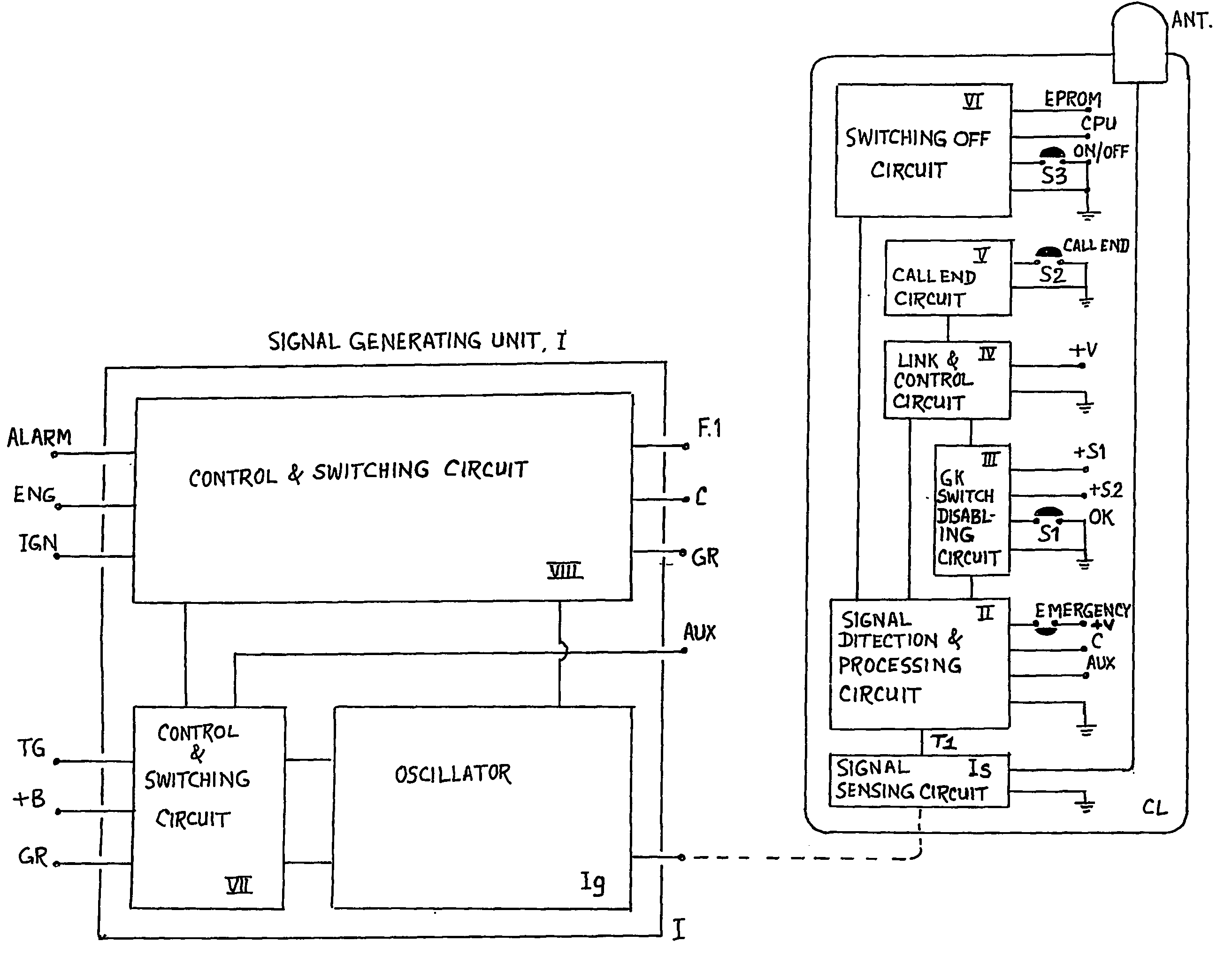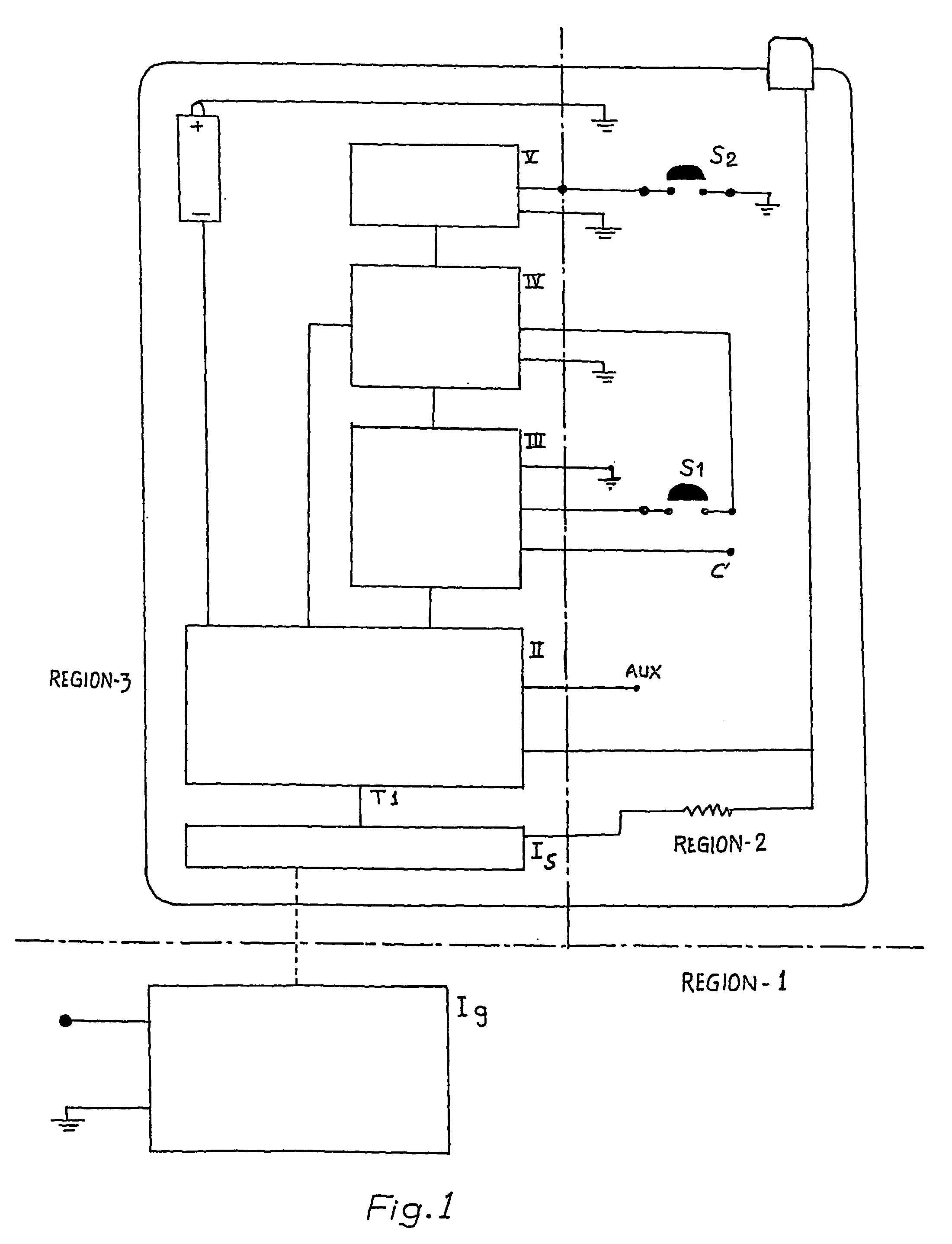System which automatically disables or switches off a cellphone
a technology of automatic disassembly and switching off, which is applied in the direction of transmission, substation equipment, wireless communication, etc., and can solve the problems of affecting the enforcement of the law, the use of cellphones by individuals, and the danger of being harmed
- Summary
- Abstract
- Description
- Claims
- Application Information
AI Technical Summary
Benefits of technology
Problems solved by technology
Method used
Image
Examples
Embodiment Construction
[0047]Referring to FIG. 1, the block diagram depicts a Signal Generating Unit I comprising a Signal Generating and Transmitter Circuit Ig that may be positioned either below the driver's seat or inside the dashboard of the vehicle. The Signal Generating Circuit Ig is linked to a conducting foil F1, enclosed inside the seat of the driver, and forming one part of a first capacitive coupling CC1 in a manner shown in FIG. 2. Another conducting foil F2 provided in the cellphone constitutes a part of the second capacitive coupling CC2, and links circuit Ig to a signal detection and processing circuit II through the terminal T1. The Signal Generating Circuit Ig is adapted to be connected to the power source through the Control Circuits of FIG. 4 or 6a, and would remain in the switched on condition as long as the ignition of the vehicle remains on and / or it is moving above a certain speed, and thus would signal the presence of the first condition.
[0048]The Signal Generator Circuit Ig is con...
PUM
 Login to View More
Login to View More Abstract
Description
Claims
Application Information
 Login to View More
Login to View More - R&D
- Intellectual Property
- Life Sciences
- Materials
- Tech Scout
- Unparalleled Data Quality
- Higher Quality Content
- 60% Fewer Hallucinations
Browse by: Latest US Patents, China's latest patents, Technical Efficacy Thesaurus, Application Domain, Technology Topic, Popular Technical Reports.
© 2025 PatSnap. All rights reserved.Legal|Privacy policy|Modern Slavery Act Transparency Statement|Sitemap|About US| Contact US: help@patsnap.com



